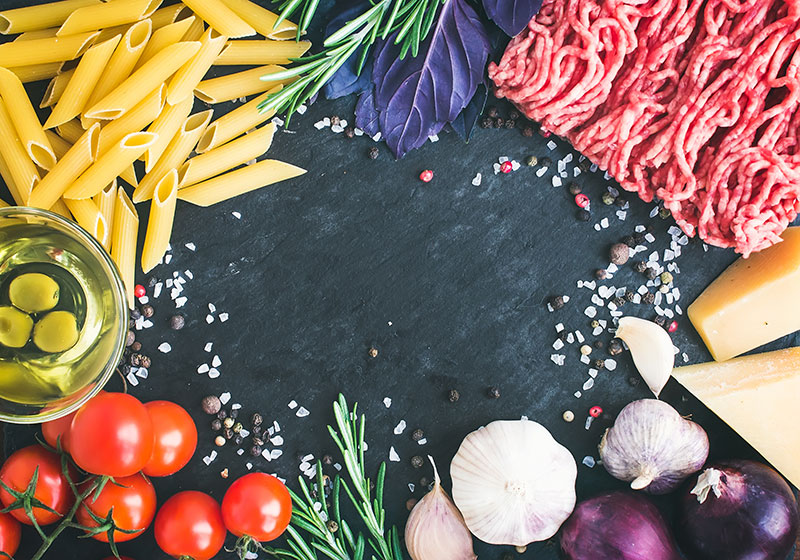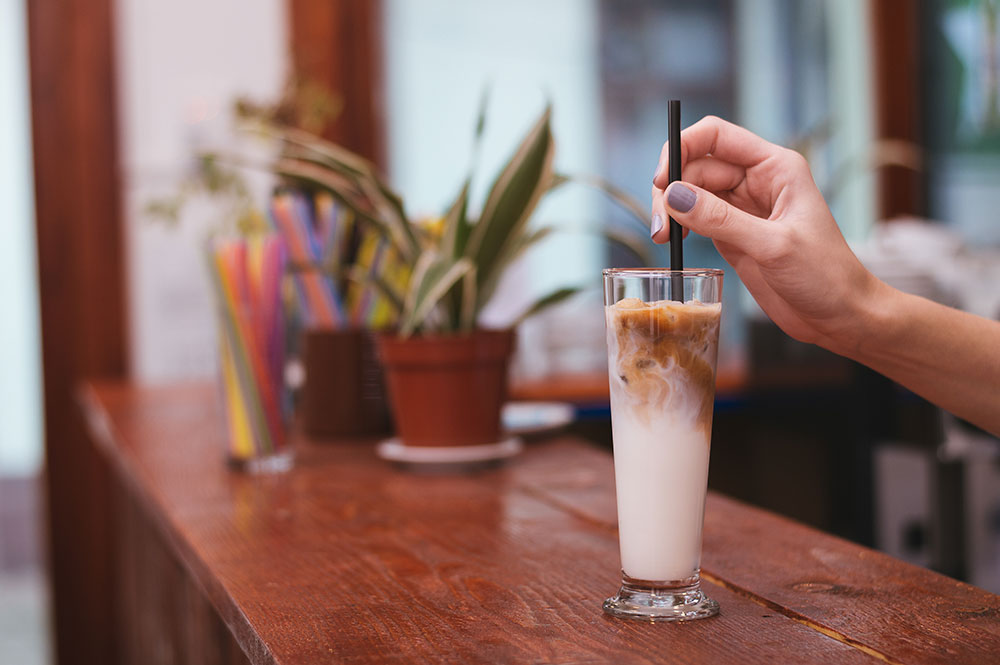The Fact and Fiction of Gluten-Free
Many sufferers of Celiac Disease need to live a gluten-free life, but countless others are also adopting a gluten-free diet. Is there an advantage? Let’s find out.

Gluten is a common term for the proteins found in wheat, rye, barley, triticale, malt, and brewer’s yeast.1 It is what helps maintain the shape and texture of foods made with these grains. The list looks simple enough, but we have not yet considered the various products made from these grains that are then used in various foods. This can make it difficult to really know which consumables contain gluten.
For example, products like semolina, farina, spelt, farro, bulgar, emmer, and more, are all products made from wheat. If you see one on a food item’s ingredient list, you may not immediately know that it contains gluten.

Consuming gluten typically isn’t a problem unless you have a sensitivity to or intolerance for it. People diagnosed with Celiac Disease experience the more serious side-effects because the intake of gluten actually causes damage to the small intestine. Not only does this hinder nutrient absorption, it can also result in symptoms like weight loss and diarrhea.2 For these reasons, malnutrition is a serious concern for individuals with this condition.
Non-celiac gluten sensitivity essentially means that, even though a person tests negative for Celiac Disease and negative for a wheat allergy, they still experience some of the milder side-effects. Typically, this means they may experience some intestinal symptoms, headaches, fatigue, and joint pain if they consume gluten.2

How surprised would you be to learn that the opposite can actually be true? Gluten-free foods can contribute to weight gain because food manufacturers will often add fat and sugar to help recreate the qualities that gluten gives to food.3 In fact, there is no evidence that supports the idea that gluten-free foods can help someone lose weight.3
The reason gluten-free diets are perceived as beneficial for weight loss probably comes from the fact that going “gluten free” can simply mean sticking to unprocessed foods. For example, avoiding glutinous foods (like cake, pasta, etc.) can mean a lower daily calorie count which is potentially what helps gluten free dieters lose weight.

Research has determined that there is a safe threshold in terms of gluten consumption. So, if a food is labeled as “gluten free,” what that really means is that it contains less than 20 parts per million of gluten.4 Okay, but what does that even mean? We rarely quantify things this way. Parts per million refers to how much gluten there is in relation to all the other ingredients. This is not a fixed number. Some foods have a little more and some have a little less.
Each low-gluten food item adds to your overall daily intake. This means that if you consume too many “gluten-free” foods, you can accidentally consume more than the safe amount. Individuals with Celiac Disease are advised to consume no more than 10-50 milligrams per day.4

Following a gluten-free diet is actually pretty tough to adhere to, and if you don’t pay attention to what you’re eating (or if you stick to the same foods every single day), you may put yourself at risk for nutrient deficiencies. Not to mention that gluten-free foods typically aren’t enriched with the nutrients you’re already missing by avoiding gluten-containing foods.3
According to an article by the Gluten Intolerance Group, some of the most common nutrients that are difficult to obtain on a gluten-free diet include:
If you need to go gluten-free, Healthline explains that the easiest way to avoid gluten is to eat unprocessed, single-ingredient foods. This means you should avoid foods like bread, pasta, cereal, cookies, muffins, pizza, crackers, and certain beverages like beer. You should also avoid foods made or topped with soy sauce, teriyaki sauce, hoisin sauce, certain broths or marinades, and even some salad dressings.1
If you are going to consume grains, you are encouraged to stick to foods like quinoa, rice, buckwheat, tapioca, corn, and gluten-free oats.1 To be extra-safe, check the packaging for a “gluten-free” label on these items because many foods that are naturally gluten-free (like oats) may still be contaminated with gluten because they are processed or packaged in the same facility as gluten-containing products.
The lists go on for both the do’s and don’ts of gluten-friendly dieting, so be sure to check with a reputable source for a more complete list of foods.
Do you have any tips or tricks for gluten-free dieters? Share your thoughts in the comments below! For more articles like this one, subscribe to our newsletter to receive monthly highlights from the Living Healthy Blog.


I have celiac and am lactose intolerant. I have just started working out with a personal trainer. My problem is that I’m not gaining weight (rather than not losing weight). My diet consists mainly of meat, vegetables, and fruit. Any suggestions as to how I should modify my diet in order to gain weight and muscle mass?
– Jerry

You’ve got the basics down, Jerry. Building lean mass means having the extra energy and building blocks to create new fibers. You may be eating the right foods, but not enough. Or you could be missing the high-calorie essentials that make gaining weight easier. Vegetables and fruit just aren’t energy-rich, save for avocados, olives and dried fruits. Meats, poultry and seafood can be lean or fatty depending on the cut/fish. Regardless of your present choices, adding sugar and fat are the primary ways to boost calories without straying from current foods.
Normally I’d recommend cheeses, and there are enzymes you can chew for lactose intolerance. Meats can be enriched with true gravies, oil-based sauces like pesto and chimichurri, and sautéed mushrooms or garlic. Complex carbohydrates are a staple for building muscle and there are several gluten-free options like potato, corn and rice. The bonus of these is that they go well with butters or margarines for extra calories.
Here are simple suggestions as to how one could bump up the calories from a basic diet of meat, vegetables and fruit:



plain oats → oatmeal w/ ground pecans, raisins, and honey
fruit or vegetable juice → smoothie consisting of avocado, banana, and coconut milk
grilled chicken breast, asparagus → light and dark meat chicken w/ BBQ sauce, bacon wrapped asparagus, homemade mashed potatoes made with dairy free margarine and unsweetened milk substitute



steak, peppers, onion stir fry → same, plus guacamole and roasted corn
fresh fruit salad → ambrosia-style w/ nuts, shredded coconut and gluten-free marshmallows
iced coffee → coffee soy dessert
– Debbie J., MS, RD
Want more? SUBSCRIBE to receive the latest Living Healthy articles right in your inbox!
This article should not replace any exercise program or restrictions, any dietary supplements or restrictions, or any other medical recommendations from your primary care physician. Before starting any exercise program or diet, make sure it is approved by your doctor.
Some questions have been edited for length and/or clarity.
 Have a nutrition question? Our registered dietitian is ready to help!
Have a nutrition question? Our registered dietitian is ready to help!
Email nutrition@lafitness.com or submit your question below and it may be featured in an upcoming article!
Many sufferers of Celiac Disease need to live a gluten-free life, but countless others are also adopting a gluten-free diet. Is there an advantage? Let’s find out.
If you or someone you know struggles with Celiac Disease and maintaining a healthy diet, check out our latest Q+A for some helpful nutrition tips.
Be the first to know about exclusive
content, deals and promotions